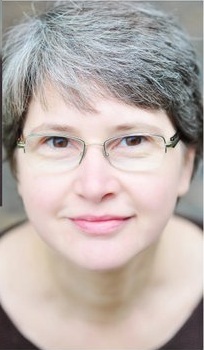 In the latest post in our Why I Joined SPM series, guest blogger Ileana Balcu shares her story of pain, searching, and finally healing, once she discovered the e-patient community. Follow her on Twitter at @yogileana.
In the latest post in our Why I Joined SPM series, guest blogger Ileana Balcu shares her story of pain, searching, and finally healing, once she discovered the e-patient community. Follow her on Twitter at @yogileana.
It was 2002 and I was happily pregnant. I thought I’d read all I could about pregnancy. But scary things started happening. A little bleeding, a little more. Tests, tests, tests, lots of doctors, always a heartbeat. It was never clear whether we would have a baby or not. At 24 weeks of pregnancy, it became painfully clear. In the hospital, with just days of the pregnancy left. Ten days later, I was home with no baby, after a weeklong fight for my own life. We started scouring the internet to understand what happened to me. We met with my doctors a month later and came back with few answers, but with a website: Pubmed. We could not get an answer to a simple question: how many women that had severe early onset preeclampsia will get it again in a subsequent pregnancy. The studies were few and inconclusive.
A few more months later, after more searching, we found the Preeclampsia Foundation. They received us with open arms. They helped us heal our souls, they cried and laughed with us, we exchanged stories of loss and hope. And through them, we got in touch with the best specialists in hypertensive disorders in pregnancy. We understood the uncertainty. We found support and, little by little, started supporting others. At the Preeclampsia Foundation, we learned to be equipped with information, engaged in our care, empowered to raise our concerns, and enabled to care about our pregnancies, our health and our children.
I had a new pregnancy as an e-patient without knowing I was one. I was self quantified without knowing it. I had physicians that appreciated what I was doing and others that labeled me as a crazy pregnant woman. It was worth it. I got a perfectly healthy baby in just 8 months (anybody can have a baby in 9 months, but I had to do it faster!)
I learned about the US healthcare system in the process and I wanted to help the people that saved me and my baby. I started a long trip into trying to find ways to help the system. I ran into Paul Levy’s blog –- Running a hospital — and into e-Patient Dave before he was e-patient. I watched his battle with cancer. I learned about e-patients. I hoped to someday be one.
But then, it looked like my adoptive country — the US — needed IT people for healthcare, so I went to a graduate certificate course in HITM (healthcare information technology management) at the Stevens Institute of Technology (which I warmly recommend). This started before HITECH (Health Information Technology for Economic and Clinical Health), Meaningful Use, Community College programs. In 2011, I graduated and tried to see who needed me and the other graduates. Surprise: not many hospitals or medical offices. I attended and even presented at conferences. There were no places for IT people with no direct experience in healthcare. For any open position, they got 500 resumes. You can count on the fingers of one hand the number of graduates that found work in HIT in my state. I had a job, others didn’t. I feel guilty to even try to get a job – others needed them so badly.
So I remembered e-Patient Dave and his group. I have been with the group for a few months now, and I feel at home. We talk about being proactive with our care, about how IT can help, about meaningful use, quality of healthcare, end-of-life decisions, how to live with the uncertainty of medical knowledge and what is the most important: how patients and doctors can work together, how patients can help the ailing healthcare system. I’m home, I’m “e,” we will change the world, one patient at a time, one doctor at a time.
Why did I join SPM? Because the SPM takes what we did at the Preeclampsia Foundation a bit further. At PF we learned the symptoms, how to watch for them, how to communicate them, how to make our doctors listen to us. At SPM we aim to get the doctors and patients as partners: patients can help with record keeping, research, teaching other patients, teaching medical students to better explain the uncertainty of the medical knowledge. We’re not just a bunch of patients: there are patients and doctors and IT gurus, and software vendors and government talking about anything healthcare. You learn so much from any day on the listserve. There are links about applications and articles of interest, and people explain the history of what happened, about how participatory medicine should be like, and opinions from so many various points of view. There’s passion and care and hope.






Wonderful article, I commend you for all you do. Thank You
Thanks!